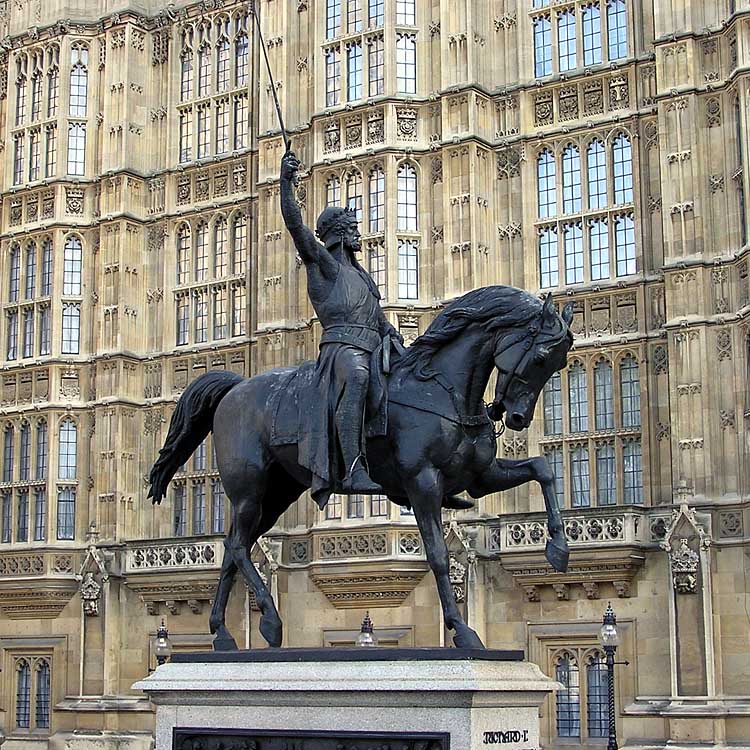
Statue of Richard Coeur de Lion, also known as Richard the Lionheart, in Old Palace Yard outside the Palace of Westminster.
Who was eligible for knighthood? If we were to reply “Everybody,” we should not be far from the truth. No one could or can say that Chivalry was a “closed” institution, or, if you prefer the term, a caste. Only the infirm were excluded because they could not cut a good figure in battle, and the whole of Chivalry is summed up in the word “fighting.” The Church very wisely excludes cripples from the altar, where they would be ridiculed, and the warriors of the Middle Ages also very wisely excluded them from Chivalry, in which they would have been useless. Depravity of mind, infamous manners, the disdain which attaches to certain professions, or origin: all these moral infirmities were calculated to close the doors of Chivalry against such base and dishonored persons. It is true the Richard Coeur de Lion was very anxious to make Mercadier, the bandit chief, his companion-in-arms, a knight, but he could not. It was simply impossible. As he was unable to ennoble this brigand, he enriched him, which was a much more feasible feat.
However, Chivalry was “open.”
León Gautier, Chivalry, trans. Henry Frith (London: George Routledge and Sons, Ltd., 1891), 214–5.









